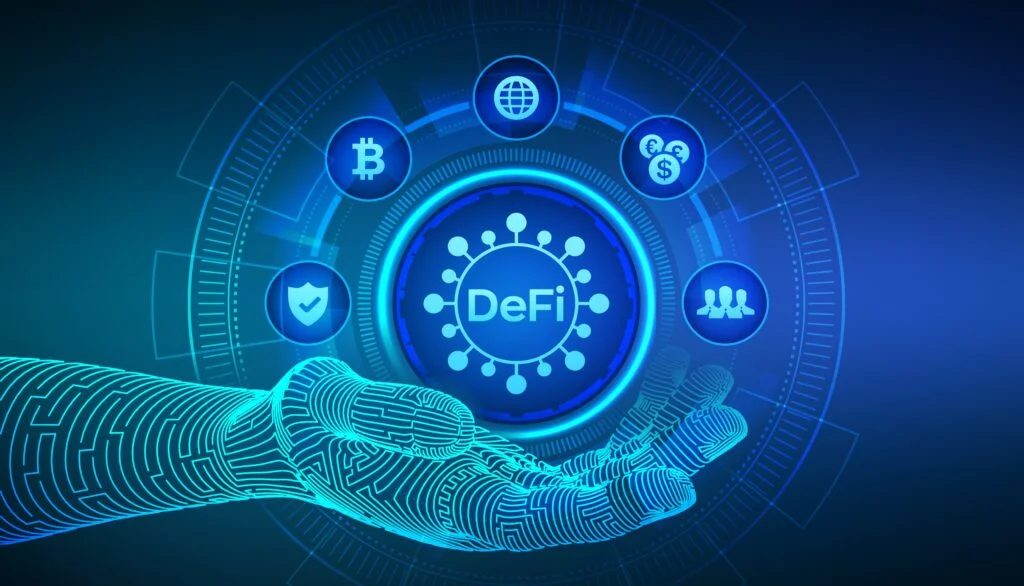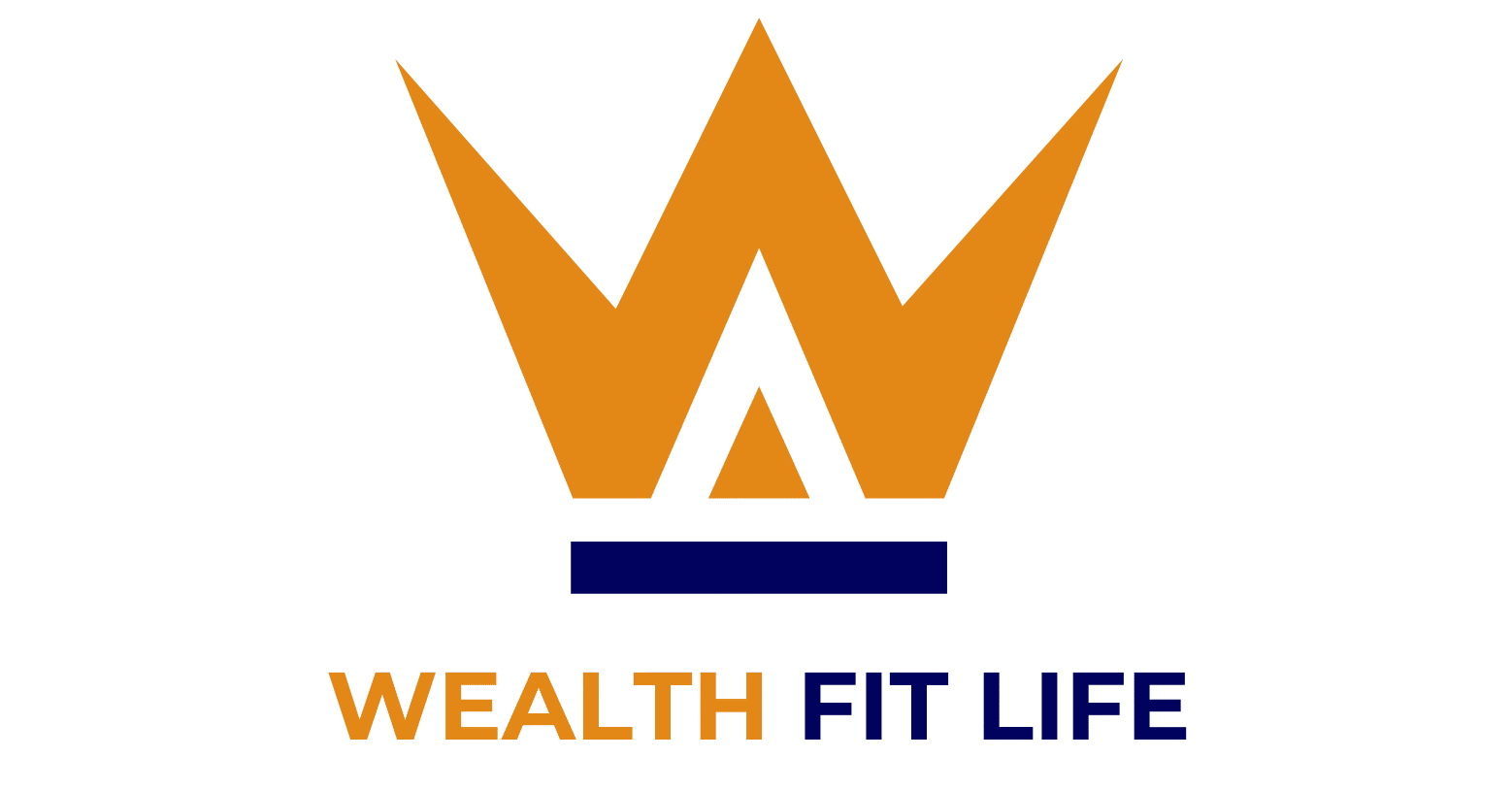Decentralized Finance (DeFi) has rapidly emerged as one of the most groundbreaking innovations in the world of finance. Built on blockchain technology, DeFi aims to transform traditional financial services by creating open, permissionless systems that eliminate the need for intermediaries like banks and brokers. As DeFi continues to grow, its potential to reshape the financial landscape is undeniable. In this article, we’ll explore the future of DeFi, highlighting key trends, innovations, and what lies ahead for this revolutionary sector.

What Is DeFi?
DeFi refers to a set of financial services that operate on decentralized networks, often using blockchain technologies like Ethereum. These services include lending, borrowing, trading, insurance, and yield farming, all of which can be accessed through smart contracts—self-executing contracts where the terms are directly written into lines of code.
Unlike traditional finance, which relies on centralized authorities, DeFi platforms are open, transparent, and offer users direct control over their assets. By eliminating intermediaries, DeFi promises to reduce costs, enhance efficiency, and provide greater financial inclusivity.
Key Trends Shaping the Future of DeFi
As the DeFi ecosystem continues to mature, several trends are emerging that will define the future of decentralized finance.
1. Integration with Traditional Finance (TradFi)
One of the most significant trends in DeFi is the growing integration with traditional financial systems. DeFi is not only attracting investors from the crypto space but also from the traditional financial sector. We are witnessing the rise of “CeFi” (Centralized Finance) platforms that are bridging the gap between DeFi and traditional finance.
For instance, decentralized exchanges (DEXs) like Uniswap and PancakeSwap are becoming more user-friendly, and DeFi lending protocols like Aave and Compound are gaining attention from institutional investors. Furthermore, many central banks are experimenting with Central Bank Digital Currencies (CBDCs), which could lead to the integration of digital currencies into the DeFi ecosystem.
2. Layer 2 Scaling Solutions
Scalability has been a significant issue for DeFi platforms, especially those built on Ethereum, where high transaction fees and congestion can deter users. However, Layer 2 solutions such as Optimistic Rollups, zk-Rollups, and sidechains are rapidly gaining traction. These solutions help to scale decentralized applications (dApps) by processing transactions off-chain, reducing fees, and increasing speed while maintaining the security of the underlying blockchain.
The implementation of Layer 2 solutions is crucial to the widespread adoption of DeFi. By improving scalability, DeFi platforms will be able to handle a larger volume of users and transactions, making them more viable for mainstream use.
3. Cross-Chain Interoperability
In the future, DeFi platforms will need to be able to communicate and transact across different blockchains seamlessly. Currently, most DeFi applications are confined to specific blockchain ecosystems like Ethereum or Binance Smart Chain. However, interoperability protocols are being developed to connect various blockchains, enabling users to move assets and data freely between networks.
Projects like Polkadot, Cosmos, and Avalanche are working towards creating interoperable ecosystems that could allow DeFi users to access a wide range of platforms, liquidity pools, and financial services across multiple blockchains.
4. Decentralized Autonomous Organizations (DAOs)
DAOs are organizations governed by smart contracts and blockchain technology instead of centralized leadership. As DeFi protocols become more complex, DAOs are emerging as a key component of DeFi’s governance structure. DAOs enable users to participate in decision-making processes, such as voting on protocol upgrades or changes to the platform’s rules.
In the future, DAOs will likely play a critical role in the governance of DeFi platforms, allowing for more community-driven and democratic financial systems. This decentralized governance model could lead to a more transparent and equitable financial ecosystem.
5. DeFi Insurance and Risk Management
As the DeFi ecosystem grows, so does the need for risk management and insurance solutions. DeFi insurance platforms, like Nexus Mutual, are already providing coverage against smart contract failures and other risks in the ecosystem. However, as more capital enters the DeFi space, the demand for more robust and diverse insurance products will increase.
In the future, DeFi insurance could expand to cover a wide range of financial risks, from yield farming and liquidity provision to cross-chain interoperability issues. This innovation could help mitigate the risks associated with DeFi, making it more appealing to institutional investors and mainstream users.
Innovations to Watch in DeFi
Beyond the trends shaping the future of DeFi, there are several exciting innovations on the horizon that could transform the industry even further.
1. Yield Aggregators
Yield aggregators are platforms that automatically move users’ funds between different DeFi protocols to maximize returns. Instead of manually tracking yield farming opportunities, users can use these platforms to ensure their assets are always earning the highest possible interest. Projects like Yearn.finance have already pioneered this concept, and more sophisticated yield aggregation solutions are likely to emerge in the coming years.
2. Synthetic Assets
Synthetic assets are blockchain-based representations of real-world assets, such as commodities, stocks, and bonds. DeFi protocols like Synthetix are already enabling users to trade synthetic assets, but in the future, we could see more advanced derivatives markets emerge that allow for the creation of complex financial products on the blockchain.
The growth of synthetic assets could make DeFi platforms a one-stop-shop for not only cryptocurrencies but also traditional assets and even real estate. This could broaden the appeal of DeFi to a wider range of investors.
3. Privacy Enhancements
Privacy is a crucial aspect of financial transactions, and as DeFi becomes more popular, the need for privacy-enhancing technologies will become more pressing. Privacy coins like Monero and Zcash, which use zero-knowledge proofs to obfuscate transaction details, may play a larger role in the DeFi ecosystem.
In addition, Layer 2 solutions and privacy-preserving smart contracts are being developed to protect users’ financial data while still enabling them to participate in decentralized applications.
Challenges and Risks in DeFi
While the future of DeFi looks bright, there are several challenges and risks that need to be addressed before it can achieve mainstream adoption:
- Regulatory Uncertainty: DeFi platforms often operate in a regulatory grey area. Governments around the world are still figuring out how to regulate cryptocurrencies and DeFi platforms, which could lead to legal uncertainties.
- Smart Contract Vulnerabilities: Smart contracts are susceptible to bugs and vulnerabilities, which can be exploited by hackers. In the future, DeFi projects will need to invest in better auditing and security practices to ensure the safety of users’ funds.
- Liquidity Issues: DeFi platforms rely on liquidity pools, and without sufficient liquidity, these platforms may face difficulties in executing trades or providing lending services. As the space grows, addressing liquidity concerns will be critical.
Conclusion
The future of Decentralized Finance (DeFi) holds immense promise, with innovations and trends that could revolutionize the financial industry. From the integration of DeFi with traditional finance to the development of cross-chain interoperability, these advancements will make DeFi more accessible, secure, and efficient. As the space continues to evolve, we can expect new solutions to emerge, further breaking down the barriers to financial freedom and inclusivity.
While there are still challenges to overcome, the rapid growth of DeFi indicates that it’s here to stay. Whether you’re a crypto enthusiast, investor, or financial institution, the DeFi revolution is one you won’t want to miss.
Read More:https://wealthfitlife.com/the-role-of-bonds-in-an-investment-portfolio/
FAQs
1. What is DeFi?
Answer: Decentralized Finance (DeFi) refers to a movement within the cryptocurrency ecosystem that aims to recreate traditional financial services (like lending, borrowing, trading, and insurance) using decentralized technologies, mainly blockchain and smart contracts, without intermediaries like banks or brokers.
2. How does DeFi work?
Answer: DeFi works through smart contracts—self-executing contracts with the terms of the agreement directly written into code. These contracts are deployed on decentralized blockchain platforms like Ethereum, allowing users to interact with financial services in a trustless and automated environment, removing intermediaries.
3. What are smart contracts in DeFi?
Answer: Smart contracts are digital agreements that automatically execute actions when certain conditions are met. In DeFi, they are used to facilitate transactions, lending, borrowing, and other financial services without human intervention, ensuring transparency, security, and efficiency.
4. What are the main benefits of DeFi?
Answer: The main benefits of DeFi include lower transaction fees, accessibility for anyone with an internet connection, transparency, security via blockchain, faster transactions, and the ability for users to have full control over their assets.
5. What is yield farming in DeFi?
Answer: Yield farming involves providing liquidity to decentralized platforms or lending protocols in exchange for rewards, often paid in the form of additional tokens. The more liquidity you provide, the higher the potential returns, but it also comes with risks.
6. What are DeFi tokens?
Answer: DeFi tokens are cryptocurrencies created and used within DeFi platforms. These tokens can represent anything from governance rights in decentralized autonomous organizations (DAOs) to assets or rewards from decentralized applications (dApps) like liquidity pools or lending protocols.
7. What are the risks associated with DeFi?
Answer: Risks in DeFi include smart contract vulnerabilities, which can be exploited by hackers; high volatility in token prices; lack of regulation and legal uncertainties; and liquidity issues that could impact your ability to trade or redeem assets. Additionally, improper usage can result in loss of funds.
8. Can I use DeFi without owning cryptocurrency?
Answer: To use DeFi, you typically need cryptocurrency to interact with most platforms (e.g., Ethereum, Bitcoin, or stablecoins). You can then use these assets for lending, borrowing, staking, or yield farming. Some platforms might offer fiat onramps, but most transactions are based on cryptocurrencies.
9. What is a decentralized exchange (DEX)?
Answer: A Decentralized Exchange (DEX) is a platform that allows users to trade cryptocurrencies directly with one another, without relying on an intermediary or centralized authority. Popular DEXs include Uniswap and PancakeSwap. These exchanges facilitate peer-to-peer transactions using smart contracts.
10. How is DeFi different from traditional finance?
Answer: DeFi differs from traditional finance in that it operates on decentralized platforms, offering open, permissionless access to financial services, while traditional finance relies on intermediaries like banks, brokers, and financial institutions. DeFi uses blockchain and smart contracts, while traditional finance operates under centralized, often opaque systems.
